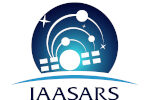Overview
The XMM-ATLAS survey covers 8 sq. degrees of the Hesrchel ATLAS Science Demonstration Phase (SDP) with the XMM-Newton observatory in mosaic mode (total requested exposure 300 ksec). The H-ATLAS (PACS & SPIRE) survey covers regions where excellent quality multi-wavelength data exist including the GAMA AAT spectroscopic survey as well near-IR data from the UKIDS survey. The proposed observations will provide by far the largest contiguous area mid-IR/submm survey with X-ray containing about 6000 250micron and 2000 X-ray sources. The major scientific goal is to place strong constraints on the link between AGN and star-formation activity in the low-redshift (z<0.5) Universe.
SCIENCE CASE
Over the past years there has been growing evidence supporting the coeval growth of galaxies and their resident black holes Theoretical models suggest that the links between black hole and bulge growth arise through feedback processes which self-regulate their respective growth. According to these models, there should be a strong connection between the AGN power (readily probed by the X-ray emission) and the star-formation activity (probed by far-IR observations). Rovilos et al. (2012) find a strong correlation between star-formation (Herschel) and AGN activity (XMM) in the Chandra deep field south at moderate and high redshifts. However, no correlation is found at low redshifts. This could be because different star-formation mechanisms take place at low redshifts (e.g. a large fraction of mergers Hopkins et al. 2008). Alternatively, this could be because of a self ex effect: the cosmological volumes probed by deep surveys may not allow a large dynamic range in SFR and X-ray luminosity to be probed. Hence, we proposed the the XMM/ATLAS survey which probes a large area of the sky (7 square degrees), and hence a large cosmological volumes at low redshifts. This field has excellent Herschel observations available which can probe the star-formation rates of the 2,000 X-ray detected AGN. Photometric redshift have been estimated for ~1,000 sources. The results appear in Mountrichas et al. 2017. In this page we provide both the catalogue of the X-ray sources as well as the photometric redshifts.





